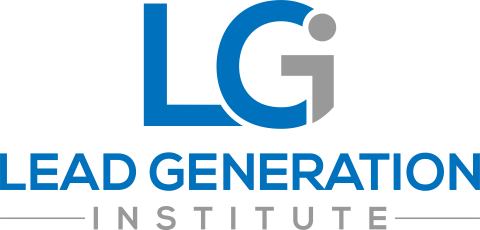The sales lead process includes a series of methodologies and best practices designed to generate new customers through various marketing campaigns. This form of lead management will facilitate a business connection by tying together outgoing advertising and the responses to that advertising.
Created for both B2Bs and B2Cs, sales lead processes generate architecture for data organization, which is distributed across the various stages of the sales process. Since the appearance of the internet and the many information systems technologies, the process has shifted much of its manual workload to automation systems.
While somewhat simple and straightforward, the sales lead process can become quite complex. With the clients, prospective clients, and sales professionals’ interactions and subsequent actions, numerous potential outcomes can occur. These can be both productive and counterproductive to the overall business development, sometimes resulting in functional disconnects.
This means that there are plenty of chances to mishandle leads, reducing or even eliminating any potential value. The proper handling and management of these scenarios are what the sales lead process is all about and the reason for its importance, in the first place.
The Right Technologies for Sales Lead Process
Before you can start on your sales lead process, you will need to get the right kind of technology able to do the job. As part of the alignment process, your sales and marketing teams will need to agree on a set of tools to capture and manage their leads and customers effectively. Some of the best solutions should be easy-to-use and incorporate several aspects, including the following:
- Website content management system capabilities
- Content creation and promotion
- Lead conversion capabilities in the form of landing pages, calls-to-action, forms, etc.
- Lead nurturing such as personalized content, email campaigns, etc.
- Marketing automation capabilities for email marketing, lead scoring, list segmentation, lead management workflows, etc.
- CRM integration for a seamless transfer of lead data, KPIs, and general communications.
In terms of CRM systems, these will allow teams to manage, update, and view their contacts in an organized way. These systems will sit at the foundation of every other piece of technology, acting as the central hub for the entire operation.
Contacts will also be organized based on various criteria selected by the sales teams. It will help them get a better understanding of a customer based on their buying patterns, as well as prepare customized quotes and pitches. A CRM system will also allow them to focus more on leads that are likely to bring more value by optimizing their sales efforts and closing more deals.
What Is a Sales Lead Process?
It’s important to remember that once a lead has been generated, it has a finite lifetime. As such, companies will need to nurture, manage, and systematically close them. Otherwise, they risk missing the opportunity altogether. In terms of the sales lead process, several critical stages follow a lead throughout its entire life cycle. These stages are as follows:
The Lead Generation Stage
Today’s customers operate primarily online, which means that, by the time they come in contact with an organization, they are pretty well informed and know what they are trying to find. It is at this point that the lead management process kicks in.
Various integrated strategies and tactics should be implemented, such as inbound marketing in the form of blogging, guest blogging, content syndication, social media updates and engagement, SEO on-page optimization, premium content (eBooks, infographics, videos, webinars), calls-to-action, landing pages, etc. Also, demand generation such as paid search (PPC), social media ads, email marketing, native ads, direct mail, print ads, media ads, trade shows, speaking engagements, and networking will be used to capture qualified sales leads.
By combining both inbound and outbound marketing and gearing it towards your existing customers and interested prospects, you will stand a better chance of increasing the overall effectiveness of your lead generation initiatives.
The Lead Qualification Stage
The next step of the process is lead distribution, which is where both sales automation and especially marketing automation come into play. This step can be comprised of several stages in itself:
- Intelligence Gathering – During this part, sales and marketing work together to establish criteria for segmentation and lead scoring. You will also have to develop personas and detailed buyer’s journeys for each of these personas. Information gathering is done via landing pages, forms, as well as by using progressive profiling to keep conversion rates high. You can also use LinkedIn, Hoovers, or other similar business data sites to further develop customer profiles. Services like Crystal Knows can even help you identify persona’s of your prospects which can help you communicate more effectively by using the right one of voice. You should also identify pages and events that, once visited or triggered, will indicate that it’s time to move any lead down their buyer’s journey.
- Lead Segmentation – By making use of marketing automation workflows, you will categorize your leads into lists by using criteria like marketing qualified leads (MQL), sales qualified leads (SQL), opportunity, upsell opportunity, retention opportunity, customer, etc. These lists will be effective during the nurturing process by sending them relevant, personalized content and email communications. Also, these lists will be useful for highly targeted campaigns when you aim towards a role within a particular industry or market segment.
- Lead Scoring – Next up is a lead scoring system. Here, you set up criteria and a reward-point system to qualify your leads as they pass through their respective lifecycle stages. You will move the leads in the CRM when the time is right and trigger notifications by using marketing automation workflows. Leads can accumulate both positive and negative scores based on their explicit data (industry, role, company size, revenue, etc.), and implicit data or engagement (number of web visits, repeat visits, unique page views, email opens and clicks, form fills, content downloads, etc.), velocity (recent engagement, volume and timing of events that indicate their intention to buy).
- Lead Nurturing – Not all leads will be prepared to buy the moment you come in contact with them. Sirius Decisions reported that only 25% of leads will make a purchase decision in year one and that 75% of the leads generated will not make a purchase decision until years two or three. It’s for this reason why you need to build long-lasting relationships with them by providing them with the right kind of content at the right time and across the right channels throughout the entirety of their buyer’s journey. Otherwise you risk wasting 75% of your marketing budget.
To do this, you will need to monitor and influence their progression through the sales funnel by making use of their buyer’s persona and content mapping. The content you create can be sent via personalized email campaigns, or dynamic website messaging tailored for specific segments and personas. You should also keep them within your lead scoring system and adjust it based on how they consume your content as well as how often. This systematic approach to lead nurturing is essential for sales efficiency, better closure rates, as well as for building up your company’s reputation as a provider in your industry.
The Conversion and Opportunity Creation Stage
Once a lead has passed the marketing qualified lead (MQL) stage, it’s time to move it on to the sales department and turn it into a sales accepted lead (SAL). Just be sure that your lead is sales ready before passing it to sales. Lead scoring will help in this regard by making sure each lead has met the minimum qualification criteria agreed upon by both sales and marketing. Also, make sure that marketing will provide all the necessary information on the lead’s background and activity, and that sales will do its own research to gather as much lead information as possible before contacting. If a sales person accepts the lead its time to contact that lead for further qualification. If the lead fails to meet the qualification criteria the sales process should allow the salesperson assigned to that lead the ability to assign that lead to a lead nurturing program or stage.
Once a SAL has been properly vetted and opportunity identified that lead should be added to that salesperson’s forecast with all of the opportunity details. Most CRM systems will provide you with the necessary features to track and manage your opportunities. If, however, you’re using channel sales, it’s advisable that you use a Partner Relationship Management platform that can better drive the opportunity creation and management through your existing channels.
The Deal Closing Stage
At this point in the sales pipeline, the sale will be either won or lost. If the deal is won, you will move it to the payment stage with any additional notes that may be required. At any point during the sales lead process, however, you can lose a deal. The reasons for the loss should also be noted and be used for further analysis and recycling. Among these reasons, you may come to realize that your organization wasn’t the right fit or that the customer didn’t have the necessary budget left to make the purchase. Whatever the reason, you should mark it as Closed Lost.
The Analysis Stage
The last stage is to analyze the performance of every aspect of your process from lead scoring to closed won or lost sales. You will need to monitor the overall effectiveness of your marketing: your messaging alignment across multiple market segments that drive engagement and conversion. All of this information will tell you how to improve the effectiveness of your sales programs and campaigns, as well as what needs to be optimized or changed. All subsequent reports will be shared with other teams and management via the CRM so that everyone will be on the same page going forward and allow senior managers to assess performance.
If you want to learn more about how to implement a sales lead process in your own business, feel free to contact us directly or subscribe to our newsletter.




